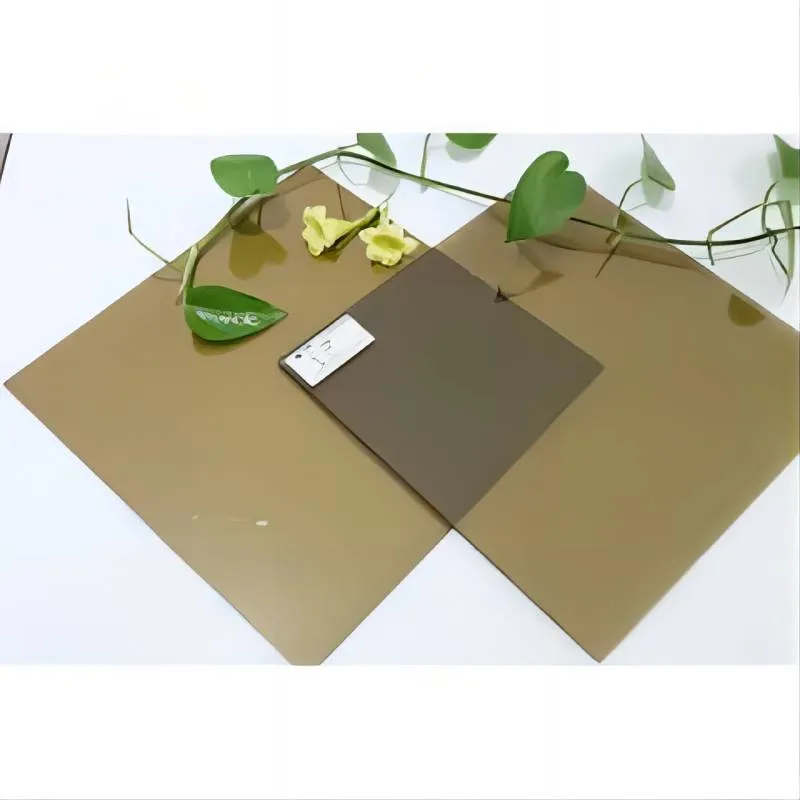Understanding Float Glass Types A Comprehensive Guide
Float glass is a popular material used in a wide range of applications, from windows and doors to mirrors and glass facades. The versatility of float glass stems from its manufacturing process and the various types available, each suited for different needs. In this article, we will delve into the different types of float glass, their properties, and their applications.
What is Float Glass?
Float glass is produced through a process that involves melting raw materials like silica sand, soda ash, and limestone. This molten glass is then poured onto a bed of molten tin, allowing it to spread out and form a flat, smooth surface. This method results in glass that is uniform in thickness and free from distortions, making it ideal for various applications.
Types of Float Glass
1. Annealed Glass
Annealed float glass is the most basic type. It undergoes a controlled cooling process after being formed. This type of glass is relatively affordable and widely used in applications where high strength and safety are not critical, such as picture frames and interior partitions.
2. Tempered Glass
Tempered glass, also known as toughened glass, is heat-treated to increase its strength. During the manufacturing process, the glass is heated to over 600°C and then rapidly cooled. This process makes it much stronger than annealed glass, and if broken, it shatters into small, blunt pieces, reducing the risk of injury. Tempered glass is commonly used in shower doors, glass doors, and façades.
3. Laminated Glass
Laminated float glass comprises two or more sheets of glass bonded together with an interlayer (usually made of polyvinyl butyral). This interlayer provides additional strength and safety, making it much harder to break. In the event of a fracture, the glass shards adhere to the interlayer, preventing them from scattering. Laminated glass is often used in automotive windshields, skylights, and glass canopies.
4. Low-E Glass
Low-emissivity (Low-E) glass is designed to minimize the amount of ultraviolet (UV) and infrared light that passes through it without compromising visible light transmission. This type of glass features a thin coating that reflects heat, which makes it highly energy-efficient. It is commonly used in energy-efficient windows and buildings aiming for sustainable design practices.
float glass types
5. Obscured Glass
Obscured glass is treated to provide privacy while allowing light to pass through. Techniques such as acid etching or sandblasting can create patterns on the glass surface. This type is commonly used in bathrooms, office partitions, and any areas where privacy is needed without sacrificing natural light.
6. Decorative Glass
Decorative float glass can be customized with various colors, patterns, and textures. It is often used in architectural designs, stained glass windows, and artwork. This type adds aesthetic appeal while maintaining the core benefits of float glass.
7. Fire-Resistant Glass
Fire-resistant glass is designed to withstand high temperatures and prevent the spread of flames and smoke. It is often used in fire-rated doors, windows, and partitions in commercial and residential buildings, where safety is paramount.
Applications of Float Glass
Float glass is utilized in numerous applications across various industries. Its primary uses include
- Architecture and Construction For window panes, façades, and interior partitions.
- Automotive Industry In windshields and side windows, where safety and visibility are crucial.
- Interior Design In furniture, mirrors, and decorative pieces that require aesthetic appeal.
- Safety and Security In high-risk areas where impact resistance is necessary, such as commercial buildings.
Conclusion
Float glass is an essential material that plays a significant role in modern architecture and design. Understanding the various types of float glass and their properties allows architects, builders, and designers to choose the most suitable options for their projects. Whether it’s for energy efficiency, safety, privacy, or aesthetic appeal, there is a type of float glass to meet the demands of any application. As technology advances, we can expect to see even more innovations within the realm of float glass, further enhancing its versatility and functionality.
 Afrikaans
Afrikaans  Albanian
Albanian  Amharic
Amharic  Arabic
Arabic  Armenian
Armenian  Azerbaijani
Azerbaijani  Basque
Basque  Belarusian
Belarusian  Bengali
Bengali  Bosnian
Bosnian  Bulgarian
Bulgarian  Catalan
Catalan  Cebuano
Cebuano  Corsican
Corsican  Croatian
Croatian  Czech
Czech  Danish
Danish  Dutch
Dutch  English
English  Esperanto
Esperanto  Estonian
Estonian  Finnish
Finnish  French
French  Frisian
Frisian  Galician
Galician  Georgian
Georgian  German
German  Greek
Greek  Gujarati
Gujarati  Haitian Creole
Haitian Creole  hausa
hausa  hawaiian
hawaiian  Hebrew
Hebrew  Hindi
Hindi  Miao
Miao  Hungarian
Hungarian  Icelandic
Icelandic  igbo
igbo  Indonesian
Indonesian  irish
irish  Italian
Italian  Japanese
Japanese  Javanese
Javanese  Kannada
Kannada  kazakh
kazakh  Khmer
Khmer  Rwandese
Rwandese  Korean
Korean  Kurdish
Kurdish  Kyrgyz
Kyrgyz  Lao
Lao  Latin
Latin  Latvian
Latvian  Lithuanian
Lithuanian  Luxembourgish
Luxembourgish  Macedonian
Macedonian  Malgashi
Malgashi  Malay
Malay  Malayalam
Malayalam  Maltese
Maltese  Maori
Maori  Marathi
Marathi  Mongolian
Mongolian  Myanmar
Myanmar  Nepali
Nepali  Norwegian
Norwegian  Norwegian
Norwegian  Occitan
Occitan  Pashto
Pashto  Persian
Persian  Polish
Polish  Portuguese
Portuguese  Punjabi
Punjabi  Romanian
Romanian  Russian
Russian  Samoan
Samoan  Scottish Gaelic
Scottish Gaelic  Serbian
Serbian  Sesotho
Sesotho  Shona
Shona  Sindhi
Sindhi  Sinhala
Sinhala  Slovak
Slovak  Slovenian
Slovenian  Somali
Somali  Spanish
Spanish  Sundanese
Sundanese  Swahili
Swahili  Swedish
Swedish  Tagalog
Tagalog  Tajik
Tajik  Tamil
Tamil  Tatar
Tatar  Telugu
Telugu  Thai
Thai  Turkish
Turkish  Turkmen
Turkmen  Ukrainian
Ukrainian  Urdu
Urdu  Uighur
Uighur  Uzbek
Uzbek  Vietnamese
Vietnamese  Welsh
Welsh  Bantu
Bantu  Yiddish
Yiddish  Yoruba
Yoruba  Zulu
Zulu 

